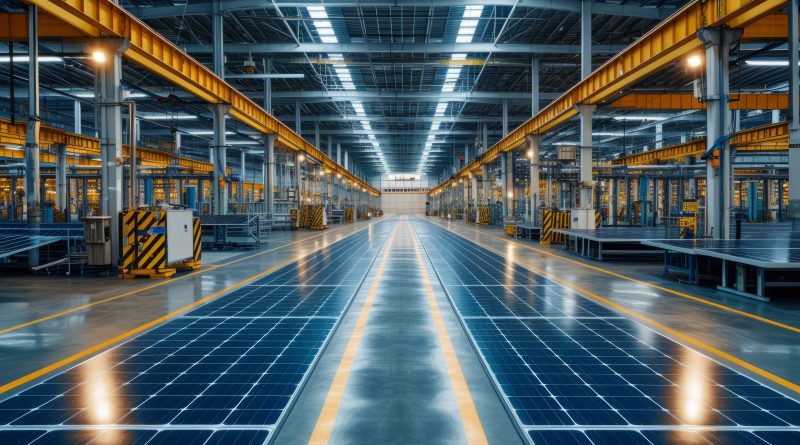China’s Solar Industry Overwhelmed by Product Glut
The Chinese solar manufacturing sector is facing a significant challenge as it deals with a critical oversupply of products. An increase in production capacity has flooded the market with solar panels, leading to a sharp drop in prices. This situation has caused financial strain for many manufacturers, as they struggle to maintain profitability.
The Financial Impact of Falling Prices and Reduced Profit Margins
The financial repercussions of the current market conditions are profound. Major Chinese solar manufacturers, including industry leaders like LONGi, Tongwei, and Aiko Solar, have reported substantial losses in the first half of 2024. The decline in prices for solar panels and related products has been steep, with Mono PERC cells and TOPCon modules experiencing a price drop of up to 63% year-on-year. This drastic decrease has eroded profit margins, making it increasingly difficult for manufacturers to sustain their operations.
In response to these financial pressures, companies have been forced to implement a series of cost-cutting measures. These include reducing production rates, laying off staff, and delaying expansion plans. The strategy aims to mitigate the impact of falling revenues and manage the surplus inventory that has accumulated due to sluggish market demand. Despite these efforts, the path to financial recovery remains uncertain as the market continues to grapple with excess supply and weak demand.
The oversupply issue in China has significant implications for global solar markets. European and Latin American markets, key destinations for Chinese solar exports, are particularly affected. In Europe, demand for solar panels has been subdued, with logistics challenges, such as high freight costs, further complicating the situation. For instance, freight rates for shipments from Shanghai to Rotterdam have remained elevated, adding to the cost pressures faced by exporters.
In Latin America, the market is characterized by intense price competition, especially in countries like Brazil. The aggressive pricing strategies employed by Chinese manufacturers, selling modules at record low prices, have forced local companies to either match these prices or lose market share. This competitive environment has not only impacted the profitability of local manufacturers but also raised concerns about the sustainability of such low prices in the long term.
Furthermore, the global market dynamics are shaped by various factors, including trade barriers and regulatory measures. Countries like the United States have imposed tariffs on Chinese solar products, which complicates the export landscape for Chinese companies. These measures, coupled with the fluctuating demand in key markets, underscore the complex challenges facing the solar industry worldwide.
Government Interventions Could Shape the Future
As the solar industry navigates these turbulent times, strategic measures and government interventions are being considered to stabilize the market. The Chinese government has been proactive in addressing the oversupply issue, with plans to phase out outdated and inefficient production capacities. This approach aims to reduce the surplus and help balance the supply-demand equation.
In addition to government policies, manufacturers are exploring innovative strategies to enhance their competitiveness. Investments in new technologies, such as high-efficiency solar cells and advanced manufacturing techniques, are being prioritized to differentiate products and improve operational efficiency. Companies are also exploring new markets and diversifying their product offerings to mitigate the impact of the domestic oversupply.
These strategic adjustments are crucial for the industry’s long-term health. By focusing on innovation and efficiency, Chinese solar manufacturers can potentially weather the current crisis and emerge stronger. The role of government support, through subsidies and favorable policies, will also be pivotal in facilitating this transition.
The future of China’s solar manufacturing industry is at a crossroads. The current oversupply crisis highlights the need for a more balanced and sustainable growth model. As companies and policymakers work to address the immediate challenges, they must also consider the long-term implications of their strategies.
The industry faces a unique set of opportunities and challenges. On one hand, there is significant potential for growth in emerging markets and new technological innovations. On the other hand, the sector must contend with ongoing issues such as market saturation, environmental concerns, and the need for greater regulatory compliance. The industry’s ability to adapt to these changing dynamics will determine its trajectory in the coming years.
Sources:
